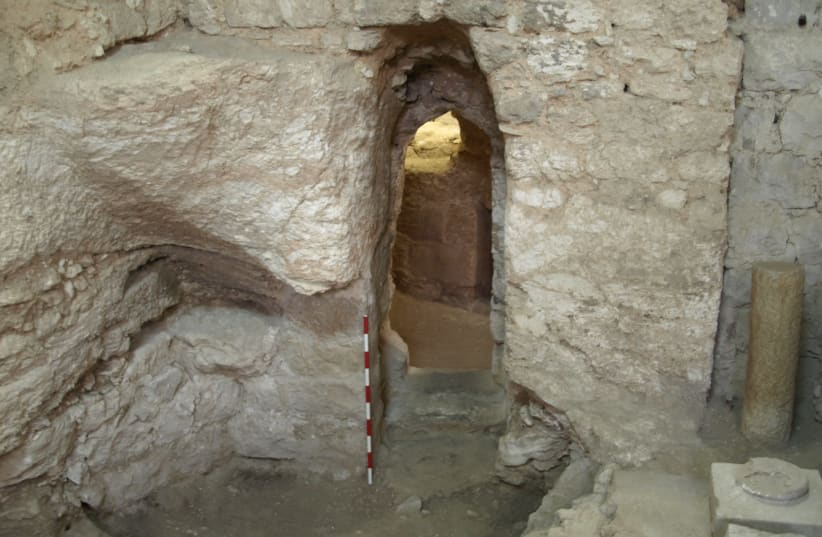Dark, who has spent more than a decade studying the first century ruins that are underneath a modern-day convent, said this spot was first suggested as the home of Jesus and his family in the 19th century but that archaeologists in the 1930s did not find the idea credible.
However, the professor was intrigued and launched a project to explore the site 14 years ago. “I didn’t go to Nazareth to find the house of Jesus, I was actually doing a study of the city’s history as a Byzantine Christian pilgrimage center,” he told the BBC. “Nobody could have been more surprised than me.”According to Dark, the ancient dwelling was under a Byzantine-era church, which is itself beneath the Sisters of Nazareth Convent. He clarified to The Jerusalem Post that, “I didn’t excavate at the Sisters of Nazareth site – I did a new survey of the site, a study of the archives and objects from decades of previous excavation, and recorded already-excavated evidence re-exposed when there was work on the crumbling mid-20th-century concrete floor.
“I haven’t said that this was certainly the ‘house of Jesus,’ just that it was probably the structure believed by Christians from the fourth century at latest to be that house, and that there is no archaeological reason why that identification is necessarily impossible.”
He told the BBC that his work revealed that the building was carved into the rocks of a hillside and that the original house was built by someone who was a master at stone working. Joseph was called a “tekton” in the Bible, which was an ancient word for craftsman or carpenter and it would have made sense that he could have carved the stone.
Yardenna Alexandre, an archaeologist working for the Antiquities Authority, said, “In 2009 and 2010, I excavated a small site in the Chemin Neuf International Mary Centre in central Nazareth, close to the site examined by Prof. Ken Dark. At the site that I excavated, remains of an Early Roman house were uncovered, probably part of the Early Roman Jewish village of Nazareth, where Jesus is considered to have been brought up.”
She said that while Dark’s conclusion was interesting, further research was needed to confirm it: “I have visited the site beneath the Sisters of Nazareth Convent, but unfortunately, I haven’t had the opportunity to visit with Prof. Dark himself, nor to see all the finds. I would very much like to visit the site with Ken in the near future. This site is also located very close to the present-day basilica, the area that is generally accepted as the ancient core of the small Roman-period Jewish village. Here, a Roman burial cave was exposed, as well as various building remains.
The possibility of dating the building remains with certainty was impeded by the fact that the site was dug in the late 19th and early 20th centuries by the resident nuns, and not as a scientific excavation, preventing a reliable affiliation of the pottery remains, essential for dating, with the specific building remains. Thus, whereas the cave is Roman (by style), the building remains could possibly be earlier, or even later. It is unlikely that the simple Jewish village population lived in a house on top, or underneath, a Jewish burial cave.In order to determine the accurate dating of the domestic building remains, it would be necessary to carry out a new scientific excavation in the very nearby vicinity.”
Speaking to CBS News, Dark said he understood that while there is much evidence to support his theory, “[It’s] by no means a conclusive case. On the one hand, we can put forward a totally plausible case that this was Jesus’s childhood home. But on the other hand, actually proving that is beyond the scope of the evidence. It’s debatable whether it would ever be possible to prove that.”
